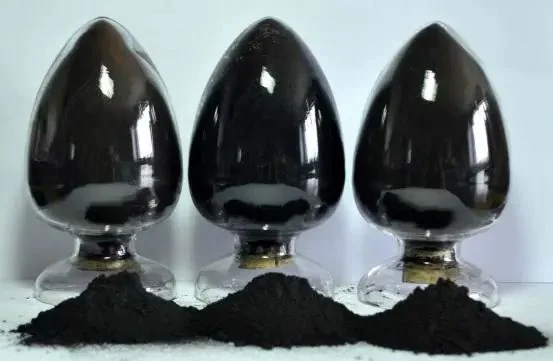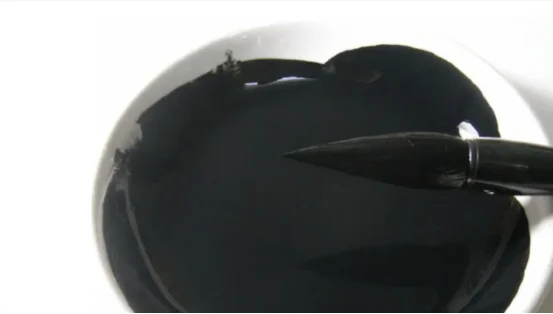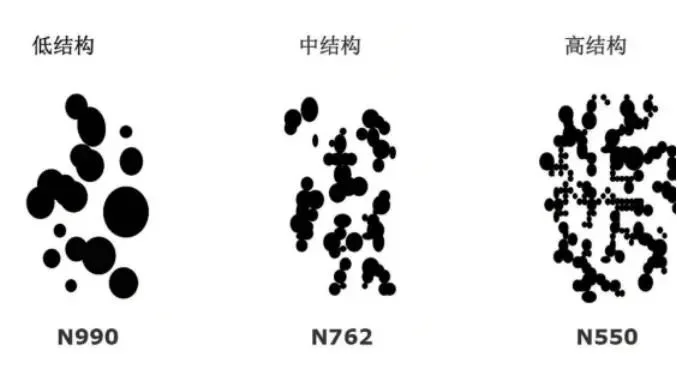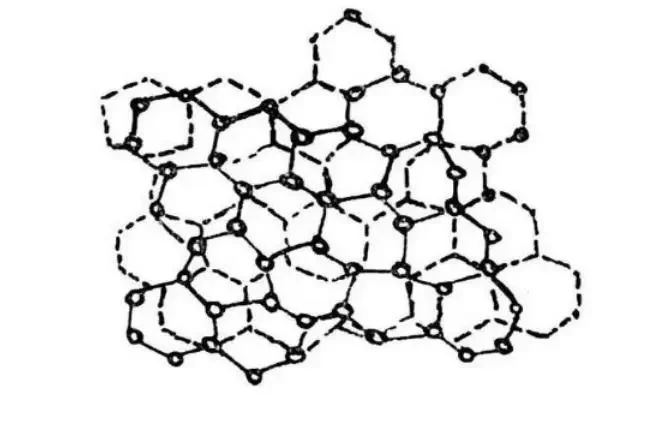When it comes to carbon black, most people may think it is just a pigment. Carbon black is an essential industrial raw material. It is commonly found in daily life. So how is carbon black closely related to our lives? What role does carbon black play in industry? What is the role of carbon black and what is its main use?
Next, the editor will cover ten key points about carbon black:
- What carbon black is.
- Its historical development.
- The growth of the carbon black industry.
- How carbon black is used.
- The different types of carbon black.
- Its structure and function.
- The production process.
- Opportunities and challenges in the industry.
- Industry development.
- How to choose carbon black and its main application fields.
This will help you understand carbon black, the important industrial raw material.

What is Carbon Black?
Carbon black is a type of amorphous carbon. It is a light, loose, and very fine black powder. You can think of it as similar to pot bottom ash. It comes from the incomplete burning or breaking down of carbon-rich materials. These include coal, natural gas, heavy oil, and fuel oil. This happens when there isn’t enough air.
Carbon black is mainly composed of carbon. It is the earliest developed, applied and currently produced nanomaterial by humans. Its basic particle size is between 10-100nm. It has excellent rubber reinforcement, coloring, conductivity or antistatic and ultraviolet absorption functions. It is listed as one of the 25 basic chemical products and fine chemical products in the international chemical field. The carbon black industry plays a key role in the tire and dyeing industries. It also enhances the quality of everyday products.
Historical Development of Carbon Black
Carbon black is one of the first key petrochemical products known to people today. In ancient times, carbon black was called “tái”, “smoke soot” or “pine smoke”. The name “tái” was used until the end of the 19th century. Since the emergence of the carbon black industry in 1872, it was gradually replaced by the term “carbon black”.
Carbon black has a very long history. According to records, China is one of the earliest countries in the world to produce carbon black. In ancient times, people burned oils from animals and plants, along with pine branches. They collected the black ash that came from the smoke. This ash was then used to make ink and black pigments. The Shang Dynasty’s oracle bone inscriptions date back three thousand years. They used “smoke soot” for ink. Ancient bamboo slips in my country were also written with ink.

Carbon black’s mark in Chinese history
During the Three Kingdoms period, Cao Zhi recorded that “ink comes from the smoke of green pine”. By the Jin Dynasty, the handicraft production of pine smoke and carbon black had become quite common. By the Southern Tang Dynasty, my country had begun to use tung oil and other animal and plant oils. When there wasn’t enough air, the oil didn’t burn fully. This caused carbon black to form and collect under the ceramic smoke bowl, creating high-quality carbon black. In Zhao Yanwei’s “Yunlu Manchao” from the Song Dynasty, it says that ink workers recently used a water trough.
They held water in it and put basins and bowls in the middle. Then, they burned tung oil and covered it with a bowl. A special person swept the match, mixed it with cow glue, and kneaded it. The method is very fast and convenient, and it is called oil smoke.” This is about the process of burning tung oil to make ink. It can be seen that there were handicraft workshops specializing in burning smoke to make ink at that time. At that time, productivity was low. This meant ink production was not efficient, making it very expensive. Su Dongpo captured this in his poem: “Picking light coal from the book’s window, sweeping the Buddha’s tent’s remaining fragrance.”” Working hard for a thousand nights, I get this one-inch jade.”
The rise of the carbon black industry
In 1821, people used natural gas as raw material to produce carbon black for the first time in North America. Since then, carbon black is no longer as simple as “soot”.
In 1872, the world realized the industrial-scale production of carbon black, and the term “carbon black” appeared at the same time. Oil and gas fields were tapped one after another. This steady supply of raw materials changed carbon black production. It moved from manual work to large-scale industry.
In 1904, the British Mote found that carbon black worked better than zinc oxide as a rubber reinforcing agent.
In 1912, Goodyear Company of the United States first used carbon black as a reinforcing material for tires.
In the early 1900s, tires were mostly white or red. They lasted about 3,000 km. Then, carbon black changed everything. Now, tires can go over 60,000 km! Carbon black strengthens tires, which has helped its mass production grow a lot.
The specific process can be briefly described as follows:
1. Early in the carbon black industry, natural gas served as the raw material. The primary method of production was the channel process. The equipment was large and the output was low.
2. Furnace carbon black in the 1940s, including oil furnace method and gas furnace method. This production method uses less equipment and boosts output. However, the quality isn’t as high as channel carbon black.
3. My country began making channel carbon black in Fushun and Sichuan during the 1950s. Then, in the 1960s, we started producing furnace carbon black. In 1985, Tianjin Carbon Black Factory brought in the 15,000-ton hard line of Continental Carbon Black from the United States. This happened in the 1980s and 1990s. Later, the Tianjin Carbon Black Factory, Fushun Chemical Factory, and Carbon Black Research Institute took in and improved the new production line.
Uses of Carbon Black
Application in rubber industry
More than 90% of all carbon black made goes to the rubber industry. Carbon black is mainly used in various tire types. This includes car, tractor, aircraft, and bicycle tires. An ordinary car tire needs about 10 kilograms of carbon black. Most carbon black used in rubber goes into tire production, making up over 75%. The rest is for other rubber items like tapes, hoses, and shoes. In the rubber industry, carbon black consumption is about 40-50% of total rubber use.

Why is carbon black used most in rubber?
The reason why carbon black is used in rubber in such a large amount is because it has excellent so-called “reinforcement” ability. The “reinforcement” ability of carbon black was first found in natural rubber in 1914. Carbon black is now confirmed to be more important for reinforcing synthetic rubber. The key benefit of carbon black in tires is better wear performance for the tread. A tire with 30% carbon black can last between 48,000 and 64,000 kilometers. In contrast, a tire using the same amount of non-reinforcing fillers lasts just 4,800 kilometers. Reinforced carbon black also boosts rubber products’ physical and mechanical properties. This includes improvements in tensile strength and tear strength.
Adding carbon black to crystalline rubbers like natural rubber or chloroprene can boost the tensile strength of vulcanized rubber by 1 to 1.7 times. In non-crystalline rubbers, such as styrene-butadiene or nitrile rubber, the strength can increase by 4 to 12 times.
In the rubber industry, select the type of carbon black and its quantity according to the product’s intended use and the conditions it will face. For tire treads, wear resistance is the top priority. You need high-reinforcement carbon black. Options include super wear-resistant, medium-super wear-resistant, or high wear-resistant furnace black. Also, tread and carcass rubber should use carbon black that has low hysteresis loss and generates little heat.
Application in ink industry
Carbon black is the main raw material of black printing ink. Most modern inks use high-quality pigment carbon black. Printing inks made of high-quality carbon black have clear handwriting and bright colors. They greatly affect the printing quality of newspapers and magazines. This, in turn, connects to people’s cultural lives. There are many types of modern inks with a wide range of uses. Among them, carbon black for news ink accounts for about 70% of all carbon black for ink. News ink contains 11-13% carbon black. About 16 kilograms of news ink is consumed for each ton of newspaper printed.

The basic properties of carbon black, such as particle size and surface area, greatly impact how ink performs and processes.
The ink industry needs carbon black to meet several key requirements:
- Blackness
- Hue
- Fluidity
- Viscosity
- Drying
- Thixotropy
Due to different purposes of use, various inks have different requirements for carbon black.
Application in coatings industry
Coating is what we usually call paint. Carbon black stands out for its stability against chemicals, light, and heat. This makes it better than other black inorganic pigments and organic black dyes. Carbon black is used in coatings. It has low reactivity, high blackness, good weather resistance, and strong tinting power. High-grade pigment carbon black is great for synthetic resin paint. It serves as a topcoat for cars. You can also use it as decorative paint for bicycles, sewing machines, and instruments. Conductive carbon black can serve as the primer for water-soluble electrophoretic coating.

Application in plastics industry
Carbon black is mainly used as a colorant in plastics. Plastics with carbon black resist degeneration from heat. Also, their size changes less. It can also boost rigidity, hardness, electrical conductivity, thermal conductivity, and corrosion resistance. More importantly, it has radiation protection, UV protection and antioxidant effects. The amount of carbon black in plastics is generally 1~2.75%.

Other applications
Carbon black has many uses. Besides the main ones, it’s found in dry batteries and electric carbon products. It also plays a role in electrical and electronic components. You’ll find it in hard alloys, high-purity graphite, and printing and dyeing. Additionally, carbon black is used in electrostatic photography, photographic film, and gunpowder. It’s also present in cement, leather, grease, casting, agriculture, and more. In these sectors, although the amount of carbon black used is small, it often plays a great role.
Classification of Carbon Black
Classification by production
Mainly divided into lamp black, gas black, furnace black and channel black.
Classification by use
Carbon black is often classified based on its uses:
- Pigment carbon black
- Rubber carbon black
- Conductive carbon black
- Special carbon black
Carbon black for pigment is classified globally based on its coloring ability. There are three types: high-pigment carbon black, medium-pigment carbon black, and low-pigment carbon black. This classification uses three English letters. The first two show how well carbon black can color. The last letter indicates how it was made.
Classification by function
It is mainly divided into reinforcing carbon black, coloring carbon black, conductive carbon black, etc.
Classification by model
It is mainly divided into N220, N330, N550, N660, N990, N110, N115, N234, N326, N339, N375, N539, N550, N880, etc.
| Serial number | Average particle size (nm) | Variety | Abbreviations |
| 1 | 1-10 | ||
| 2 | 11-19 | Super wear-resistant | SAF |
| 3 | 20-25 | Medium super wear-resistant | ISAF |
| 4 | 26-30 | High wear-resistant | HAF |
| 5 | 31-39 | Fine particles | FF |
| 6 | 40-48 | Quick extrusion | FFF |
| 7 | 49-60 | General purpose | GPF |
| 8 | 61-100 | Semi-reinforced | SRF |
| 9 | 101-200 | Fine particles thermal cracking | FT |
| 10 | 201-500 | Medium particles thermal cracking | MT |
International naming standards for carbon black:
Carbon black for rubber used to be classified by particle size. Now, it’s classified by nitrogen surface area. Also, the vulcanization speed and carbon black pigment structure matter when naming. It has 4 systems. The first letter in English shows the rubber compound’s vulcanization speed. N means normal speed, while S means slow speed. The following 3 are Arabic numerals. The first number shows the range of carbon black nitrogen surface area. It goes from 0 to 9 levels. The D24.41 Committee from the American Society for Testing and Materials gives the second and third numbers. These numbers show the structural degrees of carbon black. They reflect its approximate high and low structures, based on some degree of choice. Relatively speaking, the larger the number, the higher the structure.
Illustrate:
Carbon black N330 is a high wear-resistant furnace black. N330 is the most widely used high wear-resistant furnace black. This product’s wear resistance is a bit lower than the super wear-resistant series carbon black. However, it’s better than channel carbon black. This product is used for tire treads, cord rubber, sidewalls and various rubber industrial products. This product is a carbon black that strengthens rubber. It improves tensile strength, tear resistance, wear resistance, and elasticity. The rolling loss of passenger tires using this product is greater than N351 in the N300 series. However, it is smaller than other types. It has great dispersion and extrusion properties in rubber compounds. It works well with both synthetic and natural rubbers.
The structure and function of carbon black
The structure of carbon black is expressed by the degree to which carbon black particles aggregate into chains or grapes. High-structure carbon black is made of aggregates. These aggregates differ in size, shape, and the number of particles they contain. The oil absorption value is often used to indicate the structure. A higher oil absorption value means the carbon black has a larger structure. This structure easily forms a spatial network channel, making it more stable.

Carbon black formation
Carbon black generally refers to carbon particles. Incomplete combustion of organic matter usually causes this. In this process, hydrogen and oxygen turn into water. However, carbon doesn’t burn completely. Instead, it separates from the molecules and forms carbon black.
Different forms
Carbon black is composed of carbon, but is usually classified as an inorganic pigment. Carbon black is a black powder made from incomplete combustion or thermal cracking of hydrocarbons in gas form. Different production processes lead to various products with unique properties based on the conditions used.
Microstructure of carbon black
Carbon black particles have a microcrystalline structure. In carbon black, the arrangement of carbon atoms is similar to that of graphite, forming hexagonal planes. Usually 3 to 5 such planes form a microcrystal. The carbon atoms in each graphite layer of carbon black microcrystals are neatly arranged. However, the arrangement between layers is disordered. So, these microcrystals are also known as quasi-graphite crystals.

Carbon black particle size
The particle size of pigment carbon black can be as low as 5nm. Carbon black particles usually don’t exist alone. Instead, many particles connect through the carbon crystal layer. This forms a chain-like shape. Different production processes can produce carbon black particles with a wide range of particle sizes. Lamp black production makes a rough product. In contrast, gas black production creates finer products.
Note: The furnace black production process can produce carbon black of almost all particle size ranges. The particle sizes of the same type of carbon black vary. They show a range in particle size distribution. Generally speaking, the type with finer particles has a narrower particle size distribution.
Carbon black production process
The production principle of carbon black generally refers to carbon element particles. Incomplete burning of organic matter turns hydrogen and oxygen into water. However, carbon doesn’t burn fully and separates from molecules, creating carbon black. Carbon black is a black powder. It forms when hydrocarbons burn incompletely or undergo thermal cracking.
Different production methods lead to various products with unique properties. This happens based on the specific process conditions used.
Carbon Black Production Raw Materials
The key raw materials for making carbon black are:
- Coal tar
- Ethylene tar
- Anthracene oil
- Natural gas
- Blast furnace gas
Other materials used include petroleum products, asphalt coal tar, and N oil. These all have very high carbon content.
Common production processes are:
- Furnace method
- Spray method
- Lamp smoke method
- Slot method
- Roller method
- Mixed gas method
- Thermal cracking method
- Acetylene method
- Plasma method
Incomplete combustion methods are:
- Furnace method
- Spray method
- Lamp smoke method
- Slot method
- Roller method
- Mixed gas method
The thermal cracking methods include:
- Thermal cracking method
- Acetylene method
- Plasma method

Lamp Black Production Process
The oldest way to make carbon black is the lamp black method. In this process, the raw material burns on a flat iron plate that can be up to 1.5 meters wide. The exhaust hood collects combustion gas with carbon black. It then flows through a 1/4 bend and the fire pipe to reach the deposition device. To control the properties of carbon black, ensure the raw material is mostly incompletely burned. This should happen near the gap between the burning plate and the exhaust hood.
In the next stage, combustion happens with thermal cracking. This happens when there’s not enough oxygen. This causes larger carbon black particles to form. For these reasons, a wide range of particle size distribution is formed, mainly characterized by coarse particles. Just a small portion of the particles made between the burning plate and exhaust hood can interact with the air’s oxygen. So, these carbon blacks have few surface oxides. Their pH value is neutral, and they contain very little volatile material.
Production process of gas black
Gas black gets its name from how it’s made. First, raw hydrocarbons are heated and vaporized. Then, a self-igniting gas carries the vapor into the burner, supplying energy. Carbon black forms in many fan-shaped flames produced by these bat-shaped burners.
Each flame is small and burns in the air. So, the way carbon black forms is different from how lamp black is made. Lamp black comes from incomplete combustion. The carbon black particles are very fine. Their average size ranges from 10 to 30 nm, depending on the type. For gas black, the average particle size is 13 nm. Above the burning flame is a slowly rotating water-filled drum, on which carbon black is deposited, and then scraped away by scraping. When it’s still hot, the new carbon black touches the air’s oxygen. This causes partial oxidation and creates many acidic groups. The corresponding gas black pH value is in the acidic range. And about 6% of volatile matter can be obtained, representing its surface oxide content.
Production process of channel black
This production process uses natural gas as raw material. The process of channel black is similar to the gas combustion process of gas black production process. Natural gas burns with fan-shaped flames. The result looks a lot like gas black. The difference is that a flat water-cooled U-shaped trough is used as the deposition trough of carbon black. Due to ecological and economic reasons, this method was discontinued many years ago. Gas black production does not harm the environment. This gas-based carbon black process is still in use.
Furnace black production process
Gas black forms in the open air. In contrast, furnace black is made in a closed furnace with limited oxygen. A large flame replaces many small ones. It uses oil as fuel and adds combustible gas to heat the furnace to the right temperature. You can get the desired pigment black by adjusting the furnace black production process. For instance, carbon black can have many average particle sizes. It can range from 80nm down to 15nm, and even smaller like gas black particles. However, for the same particle size, gas black and furnace black are still different, mainly due to different surface chemistry. Furnace black products are rougher, with an average particle size of 40nm.
You can add a small amount of alkaline compounds or other additives when using the furnace black production process. This changes the type and aggregation of aggregates. As a result, you can get either high-structure or low-structure carbon black.
Since furnace black is produced at almost subatmospheric pressure and insufficient air. Most of them lack acidic surface oxides, but the alkaline-reactive pyrone structure mentioned above is found. The alkaline pH of furnace black is due to adding alkaline earth to the cold water. This happens during spray quenching in carbon black production. Alkaline salts are also added to help reduce the structure. In addition, if the furnace black is not subjected to post-oxidation treatment, its volatile content is low.
How to choose carbon black
Choose carbon black wisely. Before making a selection, think about your goals: What do you want to achieve with carbon black? Coloring, coloring, UV resistance or conductivity. The key step is to talk to professional carbon black engineers. Work together to evaluate the material system. Then, choose the best carbon black variety. For coloring, pick carbon black that is very black and has small particles. Also, ensure it is well-dispersed. If it isn’t, it won’t meet the original requirements. For color matching, pick carbon black that has low blackness. It should have a large particle size and be easy to disperse. For UV resistance in plastics and rubber, use carbon black. Choose one with medium particle size and a slightly higher structure. It offers good UV protection.
Basic properties of carbon black
The properties of carbon black determine its specific uses in various industrial fields. The following are its key performance parameters:
- ① Particle size (primary particle size)
- Particle size is a key property of carbon black. It directly impacts its performance.
- Smaller particles mean more blackness and a larger surface area. However, this can make dispersibility worse.
- The larger the particle size: the lower the blackness, but it is easier to disperse.
- ②Structure (DBP absorption value) The structure of carbon black depends on the aggregation method between particles. Higher structure values usually mean more complex particle shapes:
- High structure carbon black: improves dispersibility and conductivity, but may reduce blackness;
- Low structure carbon black: shows higher blackness, but weaker dispersibility.
- ③Surface area (total specific surface area and external specific surface area) Surface area is usually characterized by nitrogen adsorption specific surface area (NSA) and external specific surface area (STSA):
- NSA (total specific surface area): reflects the total surface area of carbon black;
- STSA (external specific surface area): only measures the surface area outside the particle.
- As porosity increases, the gap between NSA and STSA widens. This also raises carrier demand and viscosity.
- ④Surface chemistry There are various functional groups (such as oxides and sulfides) on the surface of carbon black, which can:
- Increase the moisture absorption rate of carbon black;
- Enhance the compatibility of carbon black with resins, coatings, etc.
Recommended carbon black crushing equipment
Crushing and grading equipment is key in making carbon black. It helps create ultra-fine, uniform, and functional carbon black particles. The following are several types of recommended equipment.
Mechanical Ultrafine Grinding and Classifying Machine (ACM Series)
Features: EPIC Powder Machinery’s MJW air classifier mill series can grind carbon black to D100 < 45μm. The 325 mesh sieve residue is < 0.001%. It also supports customized fineness from 600 mesh to 2000 mesh. Supporting activation modification process to enhance the affinity of carbon black and polymer.
Application: Process cracked carbon black deeply to create high-value fillers or conductive materials.
Airflow classifier (HTS series)
Features: EPIC Powder Machinery uses fully enclosed negative pressure operation. This method allows for low temperature crushing, which helps avoid material contamination. The yield rate reaches up to 80% for black powder. Multi-stage classifiers work in series. This setup helps create a focused particle size distribution. It’s ideal for producing high-purity carbon black.
Application: Printer toner, battery electrode materials and other scenes with strict fineness requirements.
